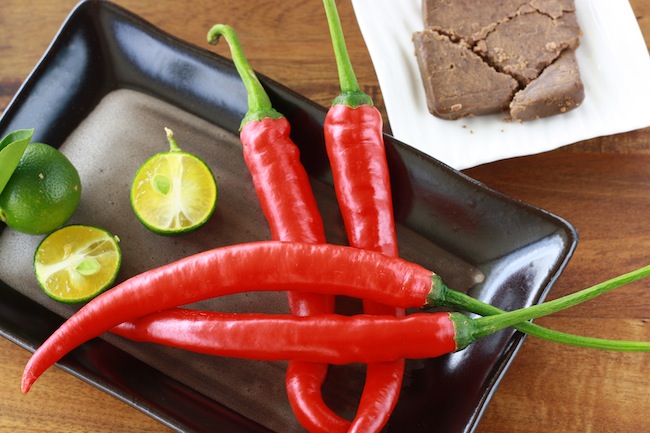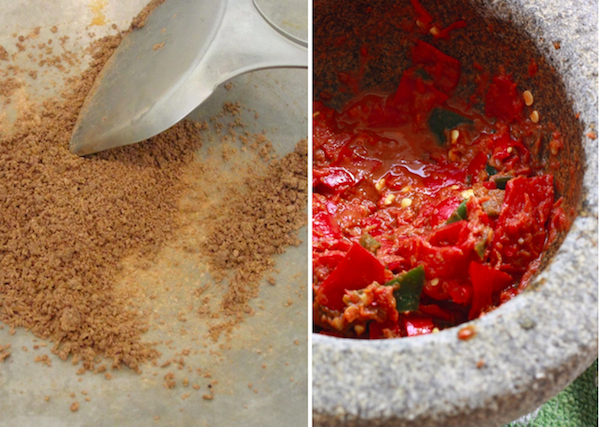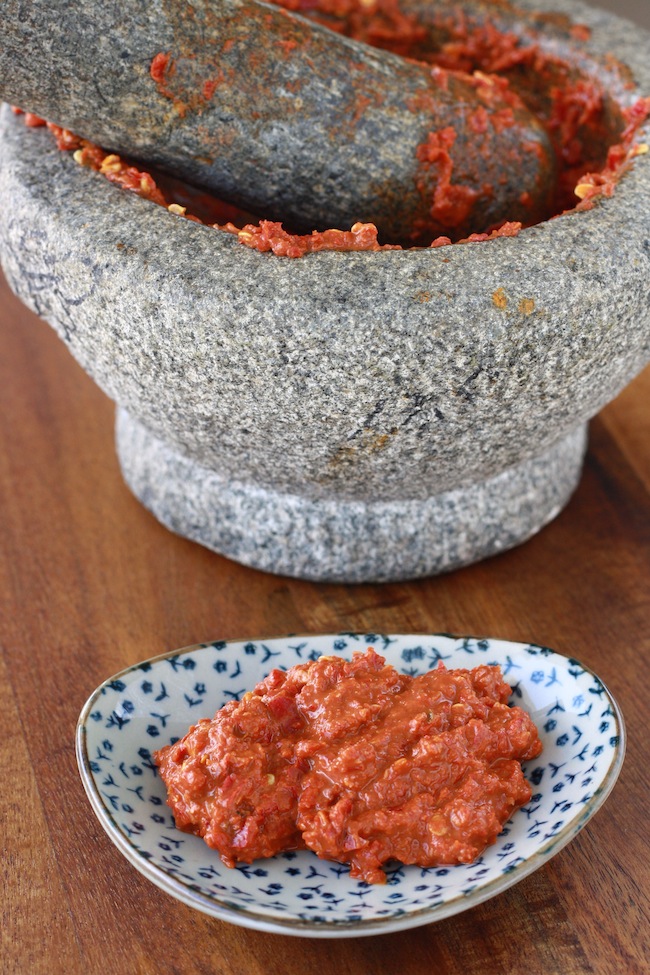Southeast Asians have a thing for foods that give punch to the palate. Real punch that sometimes requires the use of ingredients that smell (stink) up the entire house, but result in the most heavenly dish when those smells and flavours blend and fuse together in a wok.
In Malaysia and Indonesia, that stinky culprit is almost always ‘sambal belacan‘.
Sambal is basically a chili based relish or cooking ingredient. But to limit it to a definition would not do it justice. There are endess varieties of sambal, with pounded chilis mixed with any combination of spices and flavours.
When fresh chili peppers are pounded together with shrimp paste (belacan), you get the base of sambal belacan, and the base of many Malaysian dishes.

As you may have guessed, the pervasive smell comes not from fresh chilies, but from belacan, the shrimp paste made of fermented dried shrimp, anchovies and salt. But like many Southeast Asian ingredients, the smell is always accompanied with flavour. And in the case of belacan – a horrible smell equals a delicious flavour.
Whenever I make sambal belacan at home, Mark vanishes during the cooking process, but then magically reappears when dinner is ready.


In Malaysia, we use sambal belacan as a cooking ingredient to fry up sambal kangkong (water spinach), sambal asparagus, sambal lady’s fingers (okra), sambal sotong (squid), sambal fish, and literally sambal belacan everything.
We also enjoy sambal belacan as a relish. Mix it with lime juice and sugar, and it becomes the perfect condiment for rice, noodles, prawn crackers, and Malaysia’s iconic dish – Nasi Lemak. When tomatoes, shallots, garlic, palm sugar or some mashed up mangoes are thrown in, the sambal belacan transforms into our favorite dressing for Asian greens. Fresh salad with a punch – Southeast Asian style!

Just a warning first before you cook up that belacan – turn the overhead fan on high, open your windows, and make sure your neighbours aren’t home. Don’t worry, the taste is worth it…
{For more delicious sambal recipes, hop over to our ‘Can’t live without Sambal‘ post}

Grandpa & Grandma’s Nasi Lemak Recipe Part 1 – Sambal Belacan
Ingredients
Version A – Sambal Belacan as a cooking ingredient:
- 5 fresh red chilies – remove seeds if you like your sambal smoother and less spicy
- 1 1/2 tbsp belacan shrimp paste
Version B – Sambal Belacan as a relish:
- 5 fresh red chilies
- 1 1/2 tbsp shrimp paste belacan
- 1 calamansi lime You can use another type of lime if you cannot find calamansi lime in your area
Optional ingredients (quantity – go with your personal preference):
- sugar to taste
- soy sauce to taste
- finely minced garlic
Instructions
For Version A:
- Cut the chilies into smaller pieces, so they are easier to grind.
- With a pestle, pound the chilies & non-toasted belacan together in a mortar, until ground fine.
- That’s it! You have sambal belacan ready for stir frying with many dishes.
For Version B:
- Toast the shrimp paste in a frying pan or a wok on low heat until it dries out, turns powdery, and as my mom says, smells “fragrant”. The dry frying should take about 3-4 minutes.
- With a pestle, pound the chilies & toasted belacan together in a mortar, until ground fine.
- Add the optional ingredients and mix well.
- Squeeze in lime juice when you are ready to serve.
